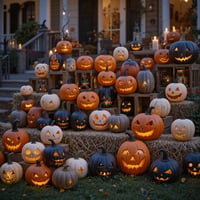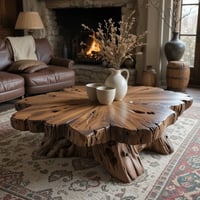Thinking of starting the Whole30 challenge but afraid of dull meals? Don't worry! Whole30 recipes...
20 Midcentury Dining Room Design Ideas (Ranked from Bold to Classic)
Some rooms just feel good—and chances are, they’ve got a little midcentury magic going on. If your dining room is feeling dull, midcentury design can bring it back to life without making it look like a furniture showroom or a period film set.
Disclosure: This post contains affiliate links which means I may receive a small commission at no extra cost to you!
This era is all about clean lines, warm woods, sculptural lighting, and iconic forms that still feel fresh decades later. Whether you’re going full retro or just adding a few vintage touches, these 20 midcentury dining room design ideas will help you pull off that timeless-yet-cool look—without losing personality.
20. Statement-Making Color Pops

Midcentury doesn’t have to mean muted. Try bold, saturated colors like mustard yellow, burnt orange, or avocado green on dining chairs or an accent wall. A colorful vintage rug underfoot instantly energizes the room. Offset the brights with warm wood tones to keep it grounded.
19. Black, White, and Brass for Drama

This combo delivers high contrast with a luxe edge. Matte black chairs, a white tulip table, and a brass sputnik chandelier strike a perfect balance of retro and refined. Keep accessories minimal—let the finishes do the talking. This look feels sleek but not sterile.
18. Layered Textures for Warmth

Midcentury rooms can sometimes lean cold—but texture fixes that. Try woven seat cushions, velvet drapes, a shag rug, or cane chairs to build tactile interest. Natural fibers like jute or wool soften all those hard lines. The result feels curated, not clinical.
17. Rustic Meets Midcentury

Blending styles can make your space feel lived-in, not staged. Pair midcentury silhouettes with rustic materials like reclaimed wood or hand-thrown ceramics. A chunky farmhouse table surrounded by tapered-leg chairs hits the sweet spot. This works especially well in older homes.
16. Oversized Paper Lanterns for Soft Lighting

Skip the trendy chandelier and opt for a huge paper globe pendant. It softens the space visually while adding that light, organic midcentury feel. Plus, it casts a flattering glow that’s great for dinner parties. Bonus: it’s budget-friendly and easy to find.
15. Olive Green + Brown = Earthy Chic

If you want color that feels timeless, olive green is your best friend. Pair it with rich chocolate browns—think walnut chairs and mossy velvet upholstery. This palette feels warm, grounded, and very 1960s without screaming retro. Add a white wall for balance.
14. Cozy Wood-Slat Nook

Create a cozy dining corner with vertical wood slat paneling behind your table. It adds texture, depth, and a touch of architectural interest. Finish with a round table, low-profile chairs, and a vintage light fixture. This setup is great for small spaces.
13. Round Pedestal Tables Keep It Flowing

A round pedestal table (like the Saarinen tulip) makes it easier to move around and chat. It’s ideal for tighter rooms where a rectangular table would feel bulky. Pair with curved upholstered chairs for added comfort. Clean lines, smart footprint.
12. Built-In Sideboards for Style + Storage

Midcentury is big on function. A built-in or freestanding walnut sideboard adds hidden storage and a surface to display art or barware. Bonus: it anchors the space visually. Go for one with tapered legs and flat-front drawers for an authentic look.
11. Geometric Wallpaper Accent Wall

Midcentury interiors loved bold prints, and wallpaper is making a serious comeback. One patterned wall—ideally behind the dining set—adds personality without overwhelming the room. Stick to geometric or atomic-style patterns in soft hues. Let your furniture stay simple.
10. Midcentury Meets Scandinavian Calm

If you like it serene, blend midcentury lines with Scandinavian restraint. Think pale woods, minimal decor, and cozy textiles. Everything should feel intentional but unfussy. Add greenery or textured ceramics to keep things from feeling too stark.
9. Make Lighting the Star

Every midcentury dining room needs a statement light fixture. Whether it’s a starburst, globe cluster, or cone pendant, lighting is where the room gets personality. Choose something sculptural that acts like art. It sets the tone instantly.
8. All-Wood Everything

Leaning into rich woods like teak, walnut, or rosewood gives a space depth and warmth. Use them across your table, chairs, and storage—but vary the tones slightly for interest. Keep accessories minimal so the woodwork stands out. This feels timeless, not heavy.
7. Colorful Rug for Personality

A vintage-style rug brings color, pattern, and comfort underfoot. It helps define the dining zone and makes the room feel more inviting. Choose midcentury patterns like diamonds, stripes, or faded geometrics. Make sure it’s large enough for all chair legs to stay on.
6. Light-Filled and Neutral

Let natural light and neutral tones do the work. White walls, pale wood, and linen accents create a peaceful, airy vibe. Add a sculptural table or chairs for some visual weight. This is perfect for modern homes or small apartments.
5. Material Mix: Metal, Glass, Wood

Combining materials—like a glass tabletop, brass lighting, and wood chairs—keeps the look dynamic. It’s a great way to make a space feel layered without adding clutter. Balance is key: don’t overdo it. Stick to three core materials.
4. Original Vintage Pieces Tell Stories

Vintage midcentury pieces add character that new replicas just can’t match. Keep an eye out for real-deal finds: authentic Eames, Broyhill Brasilia, or Danish teak. Even one vintage piece elevates the whole room. Hunt local, and enjoy the patina.
3. Retro + Modern Mashup

Who says you have to stick to one era? Pair midcentury chairs with a modern table, or add industrial or contemporary lighting for contrast. The tension makes things interesting. Just keep your color palette tight to avoid chaos.
2. The Classic Combo: Tulip Table + Curved Chairs

You can’t go wrong with the Saarinen tulip table and molded chairs. This combo is iconic for a reason—it’s simple, sculptural, and endlessly stylish. Add cushions or a bold rug for comfort and color. Works in small or large spaces.
1. Scandinavian-Inspired Midcentury Masterpiece

At the top of the list? A perfectly balanced Scandi-meets-midcentury dining room. Blond wood, tapered legs, layered neutrals, and soft lighting come together for a calm, collected feel. Add a few vintage accessories for warmth. This is midcentury at its most livable.
Conclusion
Midcentury design is more than just a trend—it’s a framework for stylish, functional living. Whether you go bold with patterns and color or stick to warm woods and clean lines, these ideas can bring clarity and charm to your dining space. Start small with lighting or chairs, or go all in with a full-room makeover. Either way, your dining room will thank you.




